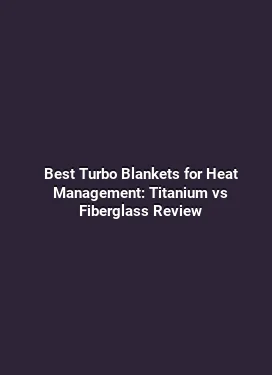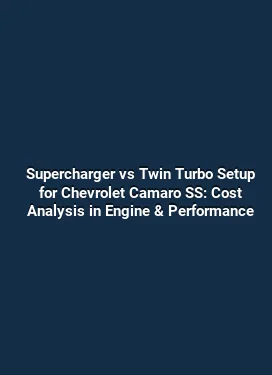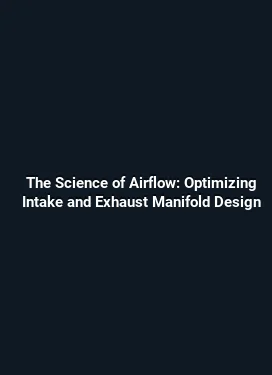How to Install Blow Off Valve on Hyundai Veloster N for Maximum Sound
The Hyundai Veloster N is celebrated for its eager turbocharged response and charismatic exhaust notes. Installing a blow off valve (BOV) can introduce a sharper intake sound during throttle lift and can complement a tuned intake system. This guide provides a practical, detailed approach to selecting, installing, and validating a BOV on the Veloster N, with emphasis on reliable fitment, safe operation, and maintaining driveability in daily use.
Understanding the Blow Off Valve and Its Role in the Veloster N

A blow off valve is a pressure relief device that vents compressed air when the throttle plate closes rapidly. In stock form, the turbocharger can experience a brief surge of pressure when the throttle is released; a BOV helps to calm this surge, reducing compressor surge and protecting the turbo. For enthusiasts, the most noticeable benefit is an audible flutter or whoosh during aggressive shifts and lift-offs. The Veloster N, with its direct injection and turbocharged setup, responds well to a properly chosen BOV that integrates with the intake and boost plumbing.
When selecting a BOV for the Veloster N, it is important to consider mounting compatibility, valve actuation type (mechanical vacuum vs. electronic control), and the desired sound profile. An appropriate BOV should minimize idle instability, prevent false alarms in the ECU, and avoid leaking boost during steady-state cruising. Compatibility with aftermarket intakes or decats, as well as the vehicle’s factory boost targets, should guide the choice. The goal is to achieve a crisp venting sound without compromising drivability or reliability.
Pre-Installation Considerations and Tools
Before removing any components, map out the path of the stock PCV/crankcase ventilation and the turbo outlet pipe. On many modern turbocharged Hyundai models, the BOV or bypass valve may share lines with PCV passages, so careful inspection is essential to prevent unmetered air leaks. Gather the following tools and supplies to streamline the process: a metric socket set, screwdrivers with magnetic tips, pliers, a folded towel to protect painted surfaces, thread sealant suitable for vacuum lines, and clamps rated for the hose diameters used in the intake tract.
Having a clean workspace and a partner to guide sensor connections during the swap reduces the risk of misalignment. It’s also prudent to have a diagnostic tool or OBD-II reader on hand to confirm there are no stored fault codes after installation and to verify that boost readings remain within factory-like behavior under light and moderate load scenarios.
Choosing the Right Blow Off Valve for the Veloster N
Multiple valve styles exist, including atmospheric and recirculating designs. A recirculating (bypass) valve tends to provide a more subtle venting sound because the air is redirected back into the intake tract. A true atmospheric valve releases air into the atmosphere, producing a louder and more audible venting effect but potentially affecting turbo efficiency and sensor readings on some cars. For the Veloster N, a high-quality recirculating valve is typically the safest option for maintaining smooth idle and avoiding lean condition indications on the intake sensor, especially if the engine management relies on precise air measurements.
Material quality, seal integrity, and compatibility with the stock vacuum network are critical. Stainless steel or anodized aluminum bodies resist heat and keep the valve functioning in the heat-soaked engine bay. Pay attention to the valve’s clampability on the hose sizes used by the Veloster N’s intake plumbing. Poorly sealed connections are a common source of vacuum leaks, which can erode throttle response and fuel trim stability.
Choosing the Right Valve for Veloster N: Considerations and Trade-offs

The Veloster N benefits from a valve that offers predictable venting behavior across a broad temperature range and boost level. For daily driving, a valve with a smooth response and quiet vent during normal throttle can preserve comfort while still delivering a satisfying intake sound during aggressive driving. For track-focused use, a valve with a more pronounced venting profile can be advantageous, provided it does not introduce irritations at part-throttle or idle.
Check for compatibility notes from manufacturers regarding fitment on the Veloster N and similar platforms. Some aftermarket valves provide optional vacuum nipple configurations or bypass adaptors to accommodate slight variations in the hose routing. If the vehicle is equipped with any aftermarket intake or intercooler components, verify that the valve’s diameter and mounting orientation do not interfere with interference-prone parts or heat shields.
Step-by-Step Installation Guide
Follow a systematic approach to ensure a clean, secure, and leak-free installation. The steps below assume a recirculating valve configuration, which is generally the easiest and most forgiving option for daily use Veloster N owners. If using an atmospheric valve, additional mounting considerations may apply to vent orientation and weatherproofing.
1) Remove the stock valve or bypass valve assembly. Depressurize the intake system by letting the engine sit in idle for a few minutes with the ignition off, then disconnect the negative battery terminal to minimize the risk of accidental shorts while handling the intake pipes. Carefully detach any vacuum lines connected to the valve, noting their routing for reassembly. Take pictures if necessary to ensure accurate reconnection later. Clean the valve mounting area to remove any oil residue or debris that could compromise seal integrity.
2) Prepare the new blow off valve. Confirm that the valve comes with the correct sealing O-rings or gaskets for the Veloster N’s intake piping. Lubricate seals lightly with a small amount of clean engine oil or manufacturer-approved lubrication to improve seal seating. Inspect the valve body for any deformities and verify that the actuation mechanism moves freely without binding.
3) Mount the valve onto the provided adapter or billet flange. Align the valve’s inlet with the turbo outlet and secure it with the appropriate clamps or bolts, tightening to the recommended torque by the manufacturer. Ensure the valve orientation does not hinder intake routing or sensors. If an adapter is required, make sure it provides a robust, leak-free transition between the hose sizes and matches the hose clamps’ diameter range.
4) Reconnect vacuum lines and sensor interfaces. Use the original routing as a guide to avoid cross-connecting lines that could confuse the engine’s intake measurement. For recirculating valves, ensure the purge line is correctly directed back into the intake stream. Avoid kinks or sharp bends that could impede airflow. Reattach the battery terminal and clear the engine bay of any tools left behind.
5) Perform a basic leak test. With the engine off, gently apply a small amount of soapy water to the intake connections and verify there are no persistent bubbles indicating a leak. Start the engine and observe the valve’s operation. A proper valve should click and seal predictably as the throttle plate opens and closes. Any hissing or flutter near idle should be investigated and corrected before driving hard.
6) Validate driving behavior and sound. Take the Veloster N on a controlled test drive in a safe, open area. Under light, medium, and heavy throttle, listen for the venting sound during lift-off. If the sound is too aggressive or too quiet, reconsider valve selection or adjustment in subsequent sessions. If ECU-related warnings appear, revert to the stock setup and re-evaluate the installation steps.
Tuning, Sound Character, and Real-World Outcomes
Sound characteristics from a BOV installation can vary based on intake diameter, intercooler routing, and turbo response. A well-chosen recirculating valve provides a crisp venting sound during throttle lift that is audible inside the cabin, while remaining discreet during normal cruising. The Veloster N’s stock boost control strategy can accommodate a mild increase in inlet pulsations, but dramatic changes should be approached with care to avoid unintended knock or fuel trim variations.
Real-world feedback from Veloster N owners who adopt a BOV often notes a more engaged driving feel during gear changes and a richer, sportier intake noise when the throttle is released. It’s important to monitor for any unexpected engine management responses, especially during cold starts, which can influence valve behavior. Consistency across temperature swings is a sign of a quality component and proper installation.
Maintenance, Inspection, and Longevity
Regular inspection of the valve and its connections is essential to sustain performance and reliability. Check for oil or grime buildup on the valve body and seal surfaces, as excessive residue can compromise sealing and venting. Periodically test the valve operation by removing the intake hose and manually actuating the valve to confirm smooth movement and seating. Replace O-rings or seals if signs of wear appear, especially after a few thousand miles of operation or exposure to harsh driving conditions.
Keep vacuum lines in good condition by replacing cracked hoses and avoiding sharp bends. If the vehicle sits idle for extended periods, consider removing and inspecting the valve for any moisture or debris that might have entered the booster lines. Clean connections and clamps prevent vibration-induced wear and noise under high RPM. A well-maintained BOV contributes to consistent performance and preserves the engine’s overall integrity over time.
Safety Considerations and Performance Boundaries
Installations should respect the Veloster N’s warranty terms and ensure no factory safety systems are bypassed or compromised. Avoid modifications that could lead to unmetered air entering the intake or triggering misfire conditions. The goal is a balanced combination of audible enhancement and dependable daily drivability. If the car exhibits hesitation, misfiring, or noticeable lag after installation, it may indicate a vacuum leak, improper sealing, or a conflicting sensor reading that needs attention.
When operating at the limits of boost or combining the BOV with other aftermarket performance components, ensure that fuel mapping, ignition timing, and turbo response remain within safe ranges. If unsure, consulting a professional technician with experience in turbocharged Hyundai platforms can help tailor the configuration to the exact setup and driving preferences.






